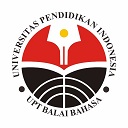Sherpur’s Students Perception of Yeats Themes Representing Ireland and Its’ Connection to Japan’s Noh
Abstract
The article shows that W. B. Yeats' themes have drawn attention to how Ireland's history and culture have developed. Irish bard W. B. Yeats is a pioneer who is advancing his country's culture, society, and civilization. To maintain the political cacophony of his nation while maintaining the impression of Ireland's atmospheric layout in his literature, he is constantly seen upholding it. His philosophical thoughts and concepts soften the edge of Ireland's independence. He uses the themes to make a point about coming up with ideas. In his themes, he demonstrates his writing style and presentational structure. Yeats' perspective on politics systematizing literary themes has caught the enormity of writing impetus. This article shows a qualitative approach to the use of themes Yeats. The themes in W. B. Yeats' creation are on display, and the spontaneous attitudes that he used to shape the portrayal of Ireland are the presentation's heart and soul. The use of themes has been put to signify the motif of Yeats in Sherpur Sadar, Bangladesh. Astonishingly, the significance of Yeats influences the students living far away from Ireland. Here the concerned bodies opine on the various aspect of Yeats’ themes and a brief analysis of its’ connection with Japan’s Noh or Nogaku which essentially influenced Yeats’ works.
Keywords
Culture; Ireland; Noh; Sherpur; Yeats.
Full Text:
PDFDOI: https://doi.org/10.17509/japanedu.v8i1.57405
Refbacks
- There are currently no refbacks.
Copyright (c) 2023 JAPANEDU: Jurnal Pendidikan dan Pengajaran Bahasa Jepang

This work is licensed under a Creative Commons Attribution-ShareAlike 4.0 International License.
 Published by:
Published by: Department of Japanese Language Education, Faculty of Language and Literature Education
Universitas Pendidikan Indonesia
 Online ISSN: Online ISSN:2528-5548 |

JAPANEDU: Jurnal Pendidikan dan Pengajaran Bahasa Jepang (e-ISSN:2528-5548) lisenced under a Creative Commons Attribution-ShareAlike 4.0 Internasional (CC BY-SA 4.0)

